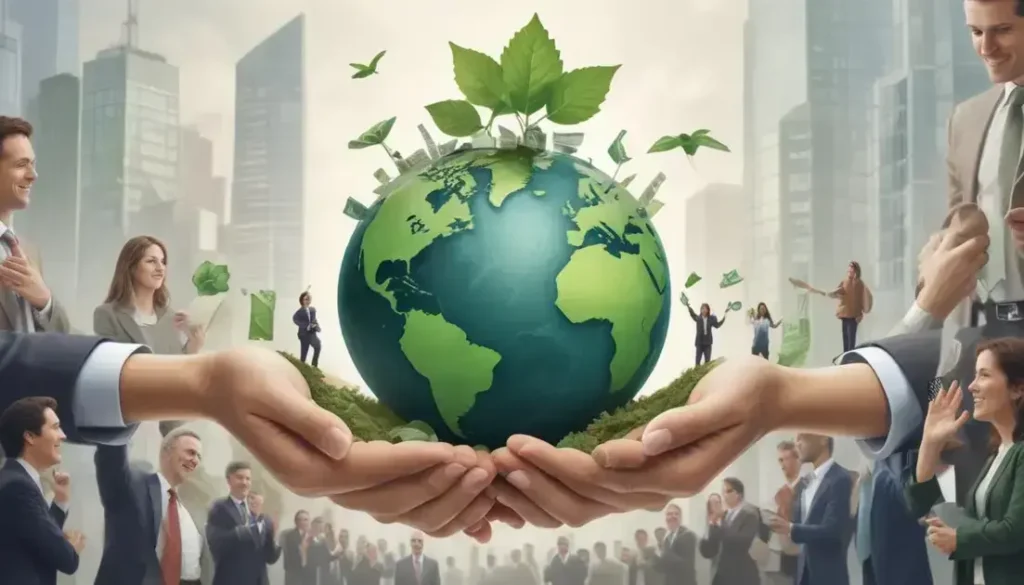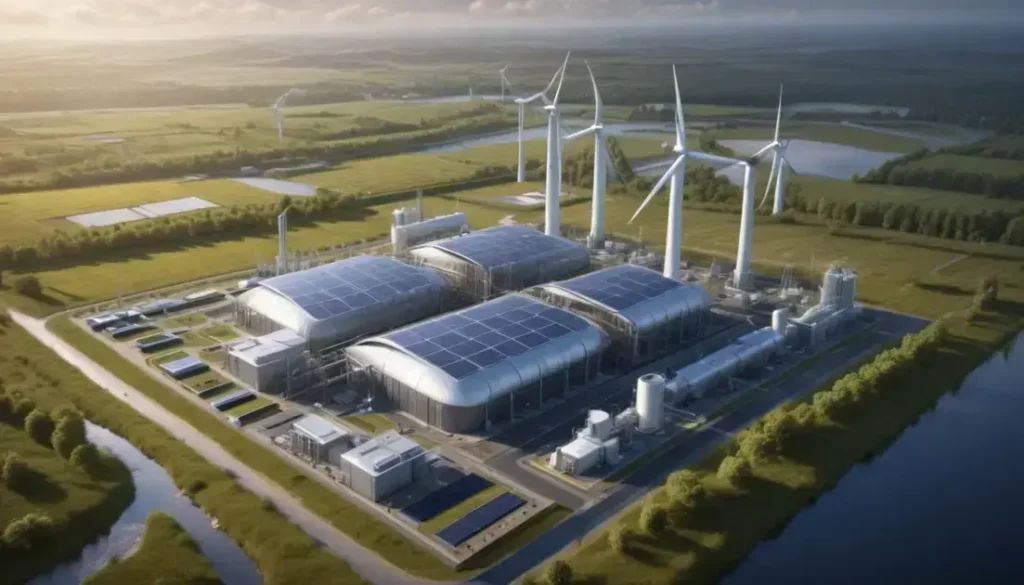Recycling efficiency can be significantly enhanced through AI technologies, which improve sorting accuracy, reduce contamination rates, and optimize overall waste management processes, ultimately supporting sustainability goals and regulatory compliance in Canada.
Recycling practices are evolving, making headlines with the introduction of AI technology. This development brings forward not just innovations but vital benefits for Canadian businesses and the environment.
Tetra Pak’s Investment in AI Sorting Technology
Tetra Pak has made significant strides by investing in AI sorting technology, aiming to enhance the efficiency of recycling processes within the packaging industry. This innovative approach not only streamlines operations but also paves the way for greater sustainability in waste management. By leveraging artificial intelligence, Tetra Pak is transforming how materials are sorted, ensuring that recyclables are accurately identified and processed.
Implementing AI in sorting allows for a faster and more precise separation of materials. This technology enhances the quality of recycled products, subsequently reducing contamination rates. Additionally, it plays a crucial role in meeting the rigorous compliance standards that Canadian businesses must adhere to regarding environmental regulations.
Tetra Pak’s investment also signifies a shift towards a circular economy, where materials are reused effectively. The company is committed to minimizing its carbon footprint and promoting responsible industry practices. By adopting these advanced technologies, Tetra Pak sets an example for other companies in the sector to follow, demonstrating how innovation drives progress in achieving sustainability goals.
The Recycling Challenge: Current Statistics
Recycling remains a critical challenge in waste management as current statistics reveal troubling trends. According to recent reports, only about 30% of recyclable materials are actually processed correctly in Canada. This low rate highlights a significant gap in efficiency and public participation in recycling initiatives.
Common obstacles include contamination of recyclable materials, where items are incorrectly disposed of in recycling bins. This contamination not only complicates the sorting process but also leads to recyclable materials being sent to landfills instead. Additionally, many Canadians lack proper knowledge about what can and cannot be recycled, which further exacerbates the problem.
Moreover, the growing volume of single-use plastics complicates recycling efforts. Despite ongoing campaigns aimed at reducing plastic waste, the numbers continue to rise, overshadowing recovery rates. Stronger educational programs and community outreach are necessary to improve participation rates in recycling programs.
To combat these challenges, investment in new recycling technologies, such as AI-driven solutions, is essential. These advancements could enhance sorting accuracy and efficiency, ensuring that more materials are diverted from landfills. A collaborative approach involving businesses, governments, and citizens is crucial for driving meaningful change in recycling practices across Canada.
How AI Sorting Works: A Look Inside
AI sorting technology enhances the recycling process by using machine learning algorithms to identify and separate materials with remarkable accuracy. The system relies on high-resolution cameras and sensors that scan items on conveyor belts, gathering real-time data about their composition.
Once scanned, the AI analyzes this data against a vast database of materials. Using advanced pattern recognition, it can quickly distinguish between recyclable materials and contaminants, ensuring that only suitable items proceed in the recycling process. This capability reduces human error and speeds up operational efficiency.
The sorting system also adapts and improves over time through continuous learning. Each sorting decision made by the AI is logged, allowing for performance analysis and refinement of algorithms. This means that as the technology is used in various recycling environments, it becomes increasingly effective at managing diverse waste streams.
Furthermore, the integration of AI in sorting helps recycling facilities meet stringent compliance standards. By ensuring higher quality recycled output, facilities can decrease the amount of waste that ends up in landfills. Thus, this technology not only promotes sustainability but also supports businesses in achieving their environmental goals.
Benefits of AI in Waste Management
The integration of AI technology into waste management systems presents numerous benefits that enhance efficiency and sustainability. One major advantage is the ability to optimize sorting processes, reducing contamination rates significantly. Advanced algorithms analyze materials, ensuring that recyclables are accurately identified and processed, which improves overall recovery rates.
Additionally, AI can predict waste generation patterns, allowing municipalities and companies to tailor their waste management strategies accordingly. By analyzing historical data and current trends, AI systems can optimize collection routes and schedules. This leads to reduced fuel consumption and lower operational costs.
Furthermore, employing AI in waste processing facilities also facilitates real-time monitoring of equipment and infrastructure. Predictive maintenance can be implemented to minimize downtime, ensuring that machinery operates at peak efficiency. As a result, waste facilities can handle larger volumes of materials without compromising quality.
Moreover, AI-driven insights encourage better decision-making when it comes to resource allocation and investment in new technologies. This holistic approach not only maximizes productivity but also contributes to building a circular economy, where waste is minimized, and resources are continually repurposed. The benefits of AI in waste management underscore its critical role in achieving sustainable environmental practices.
Regulatory Compliance and Recycling in Canada
In Canada, regulatory compliance plays a crucial role in advancing recycling initiatives and promoting sustainable waste management practices. Various levels of government have implemented regulations to ensure that businesses adhere to strict environmental standards when it comes to handling recyclable materials. These regulations are designed to minimize contamination, enhance recycling rates, and ultimately support a circular economy.
One significant framework is the Extended Producer Responsibility (EPR) program. EPR requires manufacturers to take responsibility for the entire lifecycle of their products, including disposal and recycling. By holding producers accountable, Canada is fostering a more sustainable approach to waste management that encourages the design of products with recyclability in mind.
Moreover, compliance with regulations not only protects the environment but also boosts public trust. Companies that embrace these regulations showcase their commitment to corporate social responsibility, enhancing their brand reputation. Non-compliance, on the other hand, can lead to hefty fines and damaging publicity.
As Canadian recycling efforts continue to evolve, staying informed about changing regulations is essential for businesses. By adopting robust compliance strategies, companies not only safeguard their operations but also contribute to the national goal of reducing waste and conserving natural resources.
Future Prospects: Sustainability Goals in the Industry
The future of the recycling industry hinges on ambitious sustainability goals, which are becoming increasingly critical in the fight against climate change. As more businesses recognize their environmental responsibilities, there is a marked shift towards circular economy principles. This involves minimizing waste and ensuring that resources are reused rather than discarded.
Innovations in technology, particularly in AI and machine learning, are paving the way for cleaner and more efficient recycling processes. These advancements not only improve sorting accuracy but also help identify new markets for recycled materials, creating a viable economic incentive for businesses to invest in sustainable practices.
Another key area of focus is the development of better materials. Industries are exploring new packaging solutions that are either biodegradable or easier to recycle. This proactive approach addresses the challenges posed by single-use plastics and promotes a more sustainable lifecycle for products.
Collaboration among stakeholders, including governments, NGOs, and industries, will be essential to achieve these sustainability goals. By establishing clear regulations and incentivizing eco-friendly practices, Canada can lead the way in transforming the recycling industry into a model of efficiency and responsibility. The path forward is bright, with opportunities for innovation driving environmental stewardship.
In Conclusion: Embracing a Sustainable Future
The path towards a more sustainable future in recycling and waste management is bright. With the integration of advanced technologies like AI, we can greatly enhance the efficiency and effectiveness of recycling processes.
By focusing on regulatory compliance and sustainability goals, businesses can play a vital role in reducing waste and conserving resources. Collaboration among governments, industries, and communities is essential in this journey.
As we move forward, it is crucial for all stakeholders to embrace innovative practices and prioritize eco-friendly solutions. Together, we can create a cleaner, healthier planet for future generations. The commitment to sustainability is not just an option; it is a responsibility we all share.
Frequently Asked Questions
What role does AI play in recycling processes?
AI enhances recycling processes by improving sorting accuracy, reducing contamination rates, and optimizing operational efficiency in waste management facilities.
How can regulations impact recycling rates in Canada?
Regulations, such as Extended Producer Responsibility (EPR), hold businesses accountable for their products and encourage better recycling practices, thereby improving overall recycling rates.
What are the sustainability goals for the recycling industry?
Sustainability goals include minimizing waste, increasing recycling rates, and promoting a circular economy where materials are reused rather than discarded.
How can businesses ensure compliance with recycling regulations?
Businesses can ensure compliance by staying informed about local regulations, implementing proper waste management practices, and conducting regular audits of their recycling processes.
What innovations are driving change in waste management?
Key innovations include AI-driven sorting technologies, biodegradable materials, and improved recycling infrastructure that help enhance efficiency and reduce environmental impact.
How can community engagement improve recycling efforts?
Community engagement through education and outreach initiatives can raise awareness about recycling, encourage participation, and foster a culture of sustainability.


